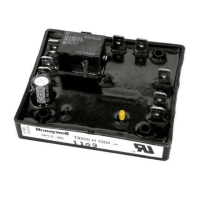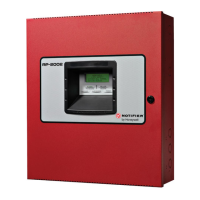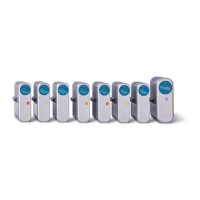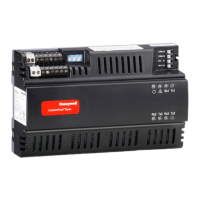The GPSSU contains the necessary power supplies, receiver circuitry and
electronics to receive signals transmitted by the NAVSTAR satellites, and to
compute present position, altitude, true track and groundspeed, and to
output these data on an ARINC 429 databus.
If the GPSSU is not able to
maintain track of at least four satellites, it uses pressure altitude from
the
ADC, and received data from the remaining satellite(s) to compute
present position.
If the GPSSU is not able to track any satellites for 30
seconds, it reverts to the Acquisition Mode.
During this
mode, the GPSSU
accepts position data from the FMS, and transmits that data (which is
identified as FMS data), until it has acquired at least four satellites,
when it re-enters the Navigation Mode.
The
GPSSU operates in five normal modes and indicates the current mode of
operation on the ARINC 429 output
bus maintenance label. In addition to the
GPSSU
modes, the signal processor circuits operate in two modes. An
additional
mode, the acceptance test procedure (ATP) mode, is used for
device testing. Each mode operates as described below:
●
●
●
●
9
9
Self-Test Mode - During the self-test mode, the GPSSU tests its circuits
to
verify proper operation. If the self-test passes, the GPSSU
immediately enters the initialization
mode.
If the self-test fails, the
GPSSU
enters the fault mode.
InitializationMode - When the circuits have been tested, the GPSSU
initializes those circuits for operation.
Acquisition Mode - During the acquisition mode, the GPSSU
begins
acquiring satellite data which includes ephemeris and almanac data. When
the
GPSSU has acquired enough satellite data to compute position, it
enters the NAV mode.
The GPSSU reverts to the acquisition mode from the
altitude-aiding/clock-coastingsubmode when it is unable to track any
satellites for 30
seconds.
Navigation (NAV) Mode -
In the NAV mode, the GPSSU updates and transmits
data on the ARINC 429 data bus to its interfaces.
The data, which
includes latitude, longitude, altitude, time, and velocity, are derived
from pseudo range and pseudo range rate measurements. These measurements
are performed seven times a second. The GPSSU remains in the NAV mode as
long as it is able to track four satellites. If it is unable to track
~~~;o;~tellites, the GPSSU
enters the altitude-aiding/clock-coasting
.
Altitude-Aiding/Clock-Coasting Submode - The
GPSSU enters the altitude-
aiding/clock-coasting submode from the
NAV mode when it is unable to
track four satellites.
In this submode, the GPSSU uses inertial or
pressure altitude inputs to determine position and other data.
The GPSSU
remains in this submode as long as one to three satellites are being
tracked. When the GPSSU
has acquired four satellites, the GPSSU
re-enters the NAV mode.
If the GPSSU cannot track any satellites for 30
seconds, the GPSSU reverts to the acquisition mode.
Fault Mode - The fault mode occurs when built-in test equipment (BITE)
detects a critical failure.
In this mode, all outputs are”inval~d. “
The signal processor circuits have two modes of operation; continuous
tracking and automatic frequency control (AFC) sequencing.
22-14-00
Page 198.205
Apr 15/93
Use or disclosure of informationon this page is subject to the restrictions onthe title page of this document.

